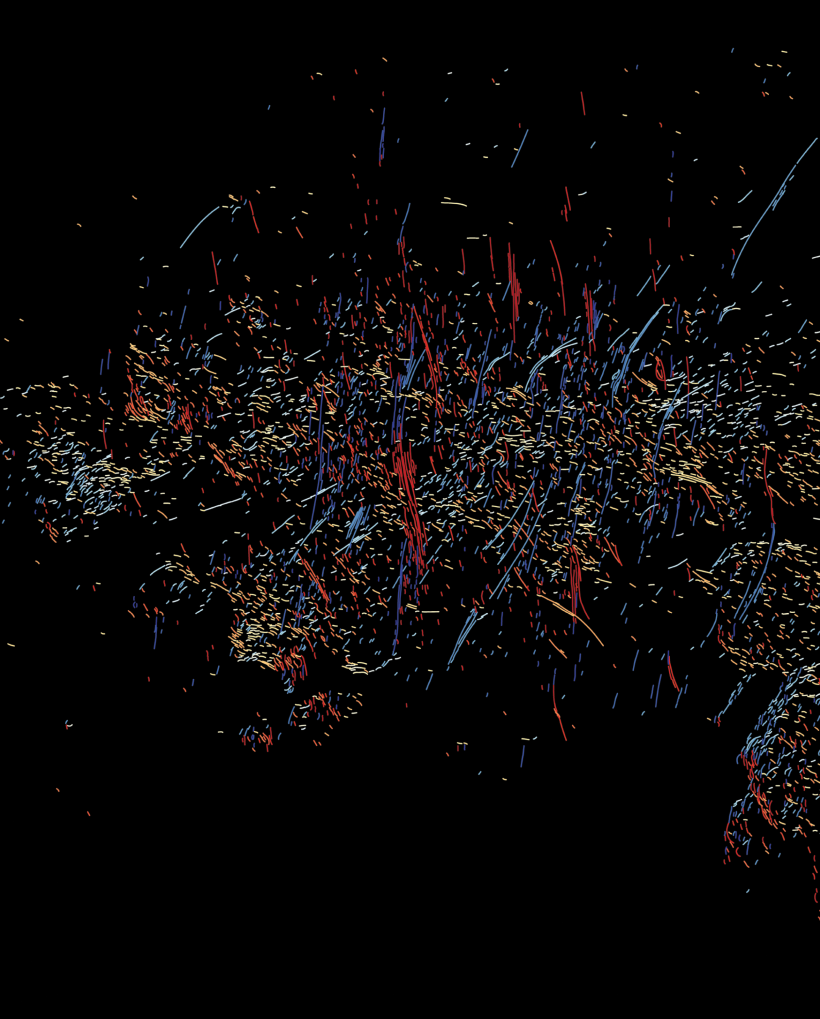Mysterious Milky Way filaments
DOI: 10.1063/PT.3.5298
Around 25 000 light-years away, high-energy particles are moving near the speed of light in large vertical magnetized threads perpendicular to the plane of the Milky Way. The particles are likely still zipping around inside them today. Northwestern University’s Farhad Yusef-Zadeh and his colleagues first discovered the filament-like structures near Sagittarius A* (Sgr A*), the black hole at the center of our galaxy, almost 40 years ago. As of 2022, about 1000 filaments stretching roughly 150 light-years have been counted. Now, through a MeerKAT radio telescope survey of the galactic center, Yusef-Zadeh and other researchers have found, to their surprise, what they suspect to be a few hundred horizontal filaments 5– 10 light-years in length that are pointing radially toward Sgr A* and parallel to the galactic plane.

To make this image, Yusef-Zadeh and his colleagues filtered the original MeerKAT image to smooth the background noise, and then they applied an algorithm technique to identify and quantify every filament, each of which is represented by a dash. The filaments here span a 3.5° × 2.5° field of view and display a colorful glimpse of only the inner few hundred parsecs of the Milky Way. The redder a filament is, the closer it points to the galactic north, whereas the bluer filaments point farther away. Yusef-Zadeh and his colleagues say that the vertical filaments do not have a clear energy source, but they suspect that the horizontal ones stem from jet-driven outflow from Sgr A*. Although they have no clear answers as to what the purpose is of both filament types, the scientists say that the horizontal filaments help further the understanding of Sgr A* and its accretion disk orientation. (F. Yusef-Zadeh et al., Astrophys. J. Lett. 949, L31, 2023
